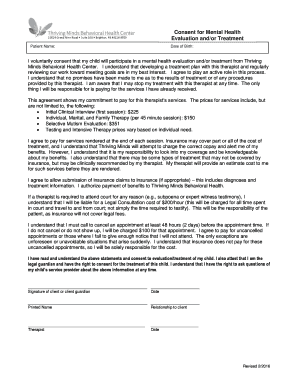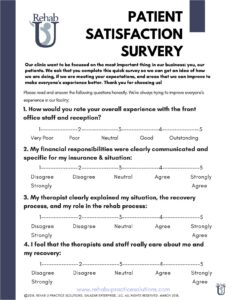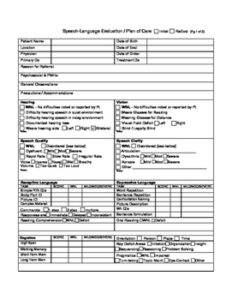In any healthcare setting, from bustling clinics to quiet therapy offices, the primary goal is to provide quality care in a safe and respectful environment. However, sometimes, the delicate balance of patient-provider relationships can be disrupted by challenging behaviors that affect not only staff well-being but also the care of other patients. Addressing these situations effectively, yet empathetically, is a critical skill for any healthcare practice.
That’s where a clear framework, like a disruptive patient behavior contract template, can become an invaluable tool. It’s not about punitive measures, but rather a structured approach to setting expectations, reinforcing boundaries, and ensuring that everyone involved can operate within a professional and therapeutic space. Think of it as a guidepost, helping to steer interactions back towards mutual respect and productive engagement when things start to veer off course.

Understanding the Need for a Behavior Contract
Navigating patient interactions can sometimes feel like a tightrope walk, especially when individuals exhibit behaviors that are uncooperative, verbally aggressive, or even physically threatening. These actions don’t just create an uncomfortable atmosphere; they can genuinely compromise the safety of your staff, other patients, and the quality of care being delivered. Imagine a scenario where a patient’s constant outbursts disrupt scheduled appointments, or their refusal to follow basic instructions puts their own health at risk. Without a clear mechanism to address these issues, the situation can quickly escalate, leading to burnout among staff and a general decline in the practice environment.
A behavior contract serves as a proactive and reactive measure. It clearly defines what constitutes unacceptable behavior within your practice’s walls, providing a transparent set of guidelines for both the patient and the healthcare team. This isn’t about shaming or isolating a patient; it’s about establishing a foundation of mutual understanding and respect, ensuring that everyone knows the boundaries within which effective care can be provided. It’s a tool for communication, designed to prevent misunderstandings and provide a clear pathway forward, even in challenging circumstances.
Key Elements to Include in Your Template
When drafting a disruptive patient behavior contract template, specificity is your friend. Vague statements can lead to misinterpretation, making the contract less effective. You want to clearly outline not just the problematic behaviors, but also the expected positive conduct and the consequences should the terms not be met. This document should be seen as a collaborative agreement, outlining what the practice expects from the patient and, implicitly, what the patient can expect in terms of continued care within those parameters.
A comprehensive disruptive patient behavior contract template should typically include:
This detailed approach ensures that there’s no ambiguity, creating a fair and understandable agreement for all parties. It also provides a vital record should further action be required, offering legal protection and a documented history of attempts to resolve the situation.
It’s also crucial to remember that while the contract sets boundaries, the initial presentation and discussion of it should be handled with empathy and a focus on collaborative problem-solving. The goal is often to help the patient understand how their behavior impacts their care and the environment, and to offer them an opportunity to correct it, rather than immediately severing ties. Consulting with legal counsel during the development of your contract template is highly recommended to ensure compliance with all applicable laws and regulations regarding patient rights and termination of care.
Implementing and Monitoring Your Contract
Once you have a robust disruptive patient behavior contract template in place, the next step is its thoughtful implementation. Introducing such a contract requires a calm, professional, and non-confrontational approach. The discussion should ideally take place in a private setting, with appropriate staff present, focusing on the patient’s well-being and the need to ensure a safe and effective care environment for everyone. It’s important to clearly explain the contract’s purpose, its terms, and what it means for their ongoing care, ensuring the patient fully understands and has an opportunity to ask questions or voice concerns. Documenting this initial discussion thoroughly is paramount.
After the contract is signed, the real work of monitoring begins. All staff members who interact with the patient should be aware of the contract and its terms. Consistency in applying the guidelines is key; selective enforcement can undermine the contract’s credibility and effectiveness. Regularly review the patient’s adherence to the contract, noting both positive changes and any instances of non-compliance. This ongoing documentation provides a factual basis for any future discussions or actions.
Should a breach occur, your contract should outline a clear response strategy. This might involve a follow-up meeting to re-discuss the terms, a warning, or the initiation of the consequences previously agreed upon. The goal remains to encourage behavioral change that allows for continued, effective care. However, if disruptive behaviors persist despite repeated attempts and interventions, the contract also provides a clear pathway for the practice to make difficult decisions, such as referring the patient to another provider or, as a last resort, terminating the relationship, always adhering to ethical and legal obligations.
Ultimately, having a well-defined process for implementing and monitoring a behavior contract safeguards your staff, maintains a positive environment, and upholds the integrity of your practice. It empowers your team to address challenging situations proactively, ensuring that patient care can be delivered in an atmosphere of mutual respect and safety.


